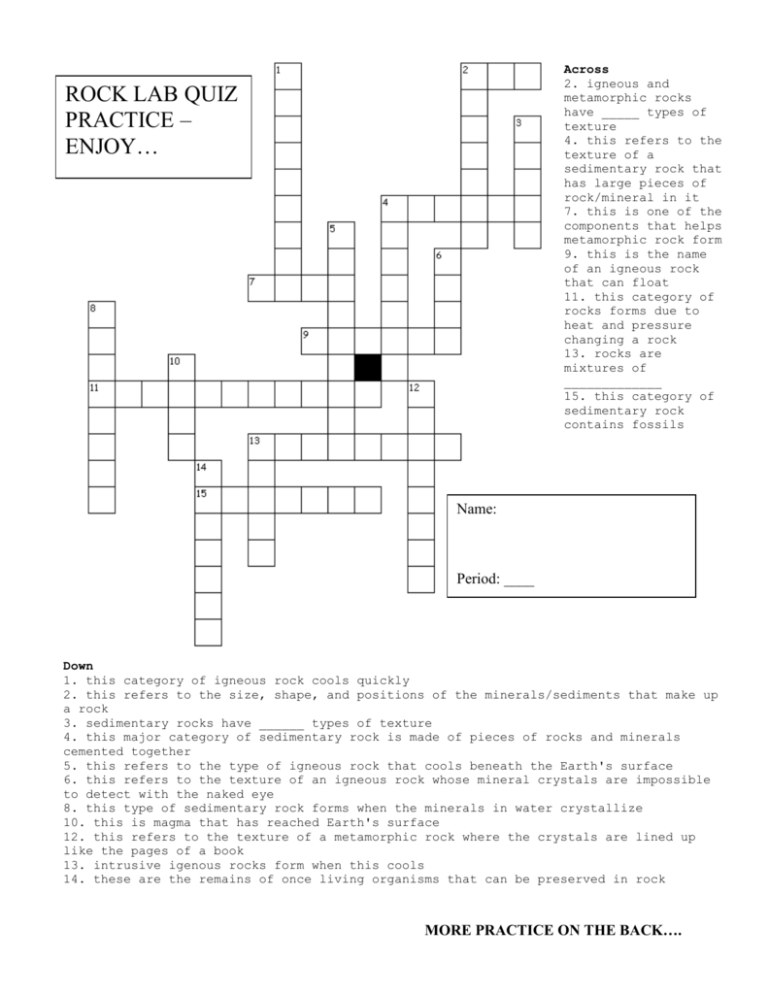ROCK LAB QUIZ PRACTICE – ENJOY…
advertisement

Across 2. igneous and metamorphic rocks have _____ types of texture 4. this refers to the texture of a sedimentary rock that has large pieces of rock/mineral in it 7. this is one of the components that helps metamorphic rock form 9. this is the name of an igneous rock that can float 11. this category of rocks forms due to heat and pressure changing a rock 13. rocks are mixtures of _____________ 15. this category of sedimentary rock contains fossils ROCK LAB QUIZ PRACTICE – ENJOY… Name: Period: ____ Down 1. this category of igneous rock cools quickly 2. this refers to the size, shape, and positions of the minerals/sediments that make up a rock 3. sedimentary rocks have ______ types of texture 4. this major category of sedimentary rock is made of pieces of rocks and minerals cemented together 5. this refers to the type of igneous rock that cools beneath the Earth's surface 6. this refers to the texture of an igneous rock whose mineral crystals are impossible to detect with the naked eye 8. this type of sedimentary rock forms when the minerals in water crystallize 10. this is magma that has reached Earth's surface 12. this refers to the texture of a metamorphic rock where the crystals are lined up like the pages of a book 13. intrusive igenous rocks form when this cools 14. these are the remains of once living organisms that can be preserved in rock MORE PRACTICE ON THE BACK…. 1. You find an igneous rock with large crystals. Is it intrusive / extrusive ? How can you tell? Explain. 2. What is a rock (what characteristics do rocks have)? 3. What is the difference between a chemical sedimentary rock and a clastic sedimentary rock? 4. What are the 2 possible textures for igneous rocks? Describe each. 5. What are the 3 possible textures for sedimentary rocks? Describe each. 6. What are the 2 possible textures for metamorphic rocks? Describe each. 7. You find a rock that contains a fossil. What do you know about the type of rock it is? 8. What is necessary for the formation of a metamorphic rock? Be specific. 9. Why can color sometimes be a poor indicator of a rock’s identity? 10. How are rocks important to humans? Give a specific example to support your thinking. 11. a. Draw a picture of the rock cycle below - be sure to show how all three major types of rock are formed. Be sure to correctly add the terms: magma, sediments, weathering, deposition, and erosion to your drawing. Show arrows to indicate how the rock cycle works. b. Define weathering and describe a specific example of how both mechanical and chemical weathering can affect rocks. c. Define erosion and describe two specific ways erosion can occur. d. Define deposition and describe two likely locations for deposition to occur.







